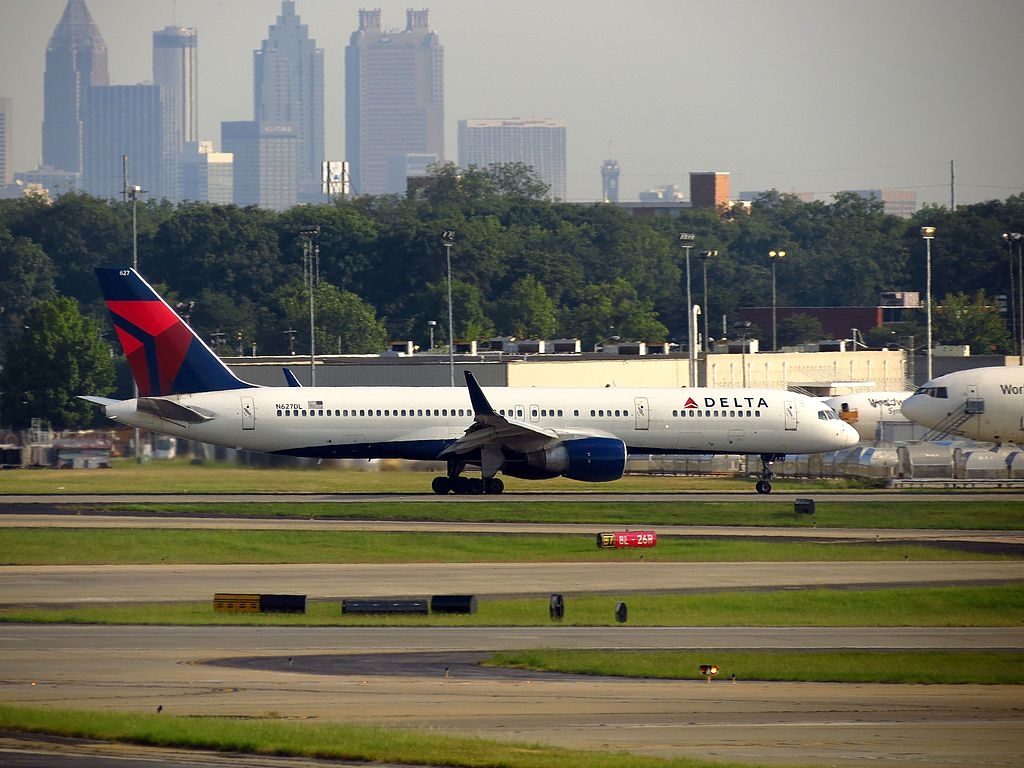The era of REAL ID enforcement is finally here. As of May 7, 2025, U.S. citizens and legal residents need to pay close attention to their identification when flying or visiting federal facilities. After years of extensions, the REAL ID Act is now in full effect, meaning that standard driver’s licenses without a special marking are no longer sufficient for certain purposes.
This guide breaks down where you need a REAL ID, what to do if you don’t have one at the airport, how to spot a REAL ID card (and understand enhanced licenses), and how these rules affect travel to Canada, Mexico, and cruises. Our focus is on U.S. travelers – international visitors will still use passports and visas as required.
Let’s dive into the essentials so you can travel with confidence under the new rules.

Where Is a REAL ID Required Now?
The REAL ID is now necessary for specific federal purposes. The most common situation is domestic air travel within the United States. If you’re flying within the U.S., TSA will ask for a REAL ID–compliant driver’s license or ID card at security. Without it, your regular license won’t be accepted for boarding a federally regulated commercial flight. This applies to travelers 18 or older. In addition to airports, you’ll also need a REAL ID to enter certain federal government facilities, military bases, and nuclear power plants. Essentially, any federal facility with security screening (like a military installation or some federal buildings) will require identification that meets REAL ID standards.
It’s important to note what a REAL ID is not needed for. You do not need a REAL ID to drive (your standard license will still let you operate a vehicle as always), to vote, to visit post offices, hospitals, or access federal benefits like Social Security. These everyday activities do not fall under the “official purposes” defined by the REAL ID Act. The law is limited to things like boarding domestic flights and entering secure federal sites. So while May 7, 2025, is a big date in travel security, it doesn’t mean your regular errands or local travel suddenly require new ID.
Federal authorities have coordinated this rollout after delaying it multiple times. All 50 states and U.S. territories are now issuing REAL ID-compliant licenses, usually marked with a star or special symbol to indicate they meet federal standards. If you haven’t upgraded yet, don’t worry – you can still do so at your state DMV with the proper documents (proof of identity, Social Security, residency, and legal status). But in the meantime, be prepared with an alternative form of ID if you plan to fly.
Showing Up Without a REAL ID at the Airport
What happens if you arrive at the airport and don’t have a REAL ID-compliant license? First, don’t panic – you might still be able to fly. TSA has a list of acceptable alternative IDs that it will accept at the security checkpointnews12.com. If your driver’s license isn’t a REAL ID, you can present a U.S. passport or a U.S. passport card instead. These are perfectly valid for domestic flights. Other common alternatives include a state-issued Enhanced Driver’s License (EDL) (more on those later), a U.S. military ID (for military members and dependents), a permanent resident (Green) card, or even a trusted traveler program card like Global Entry or NEXUSnews12.com. The TSA considers all of these as sufficient ID to clear security.
If you have no acceptable ID at all – for example, if you forgot your passport at home and your license isn’t REAL ID – TSA may still allow you through via an identity verification process. This is a special screening procedure: an officer will ask you to fill out a form and provide personal information (name, address, perhaps other verifying info) to confirm your identity. They have ways to cross-check databases to try and prove you are who you say you are. If they can confirm your identity successfully, you’ll be allowed to go through, but expect extra screening (more thorough pat-downs or bag checks) as a trade-off. This process takes time, so budget extra time at the airport if you’re in this situation. Keep in mind, if TSA cannot confirm your identity or if you refuse the process, you won’t be allowed through to your flight. In short, showing up without proper ID doesn’t automatically mean you’re stranded, but it’s a hassle and not guaranteed – so it’s far better to bring an acceptable ID.
One more tip: As of now, TSA is even accepting some expired IDs as valid, due to backlogs at DMVs in recent years. For example, an acceptable photo ID that expired in the last two years may still be used at security. This grace period was implemented so travelers weren’t punished for delays in renewing during the pandemic. So if your driver’s license or passport recently expired (within 24 months) and you haven’t gotten a renewal yet, TSA can still accept it as identification. That said, if it’s a non-compliant license, the fact that it’s expired might be moot – you’d want to use another form like a passport in that case. Always best to renew your documents timely, but know this exception exists if you’re in a pinch.
What Does a REAL ID Look Like? (And Do Enhanced IDs Count?)

Not sure if your license is a REAL ID? The quickest clue is to check for a star. Nearly all REAL ID–compliant driver’s licenses and state IDs will have a small star symbol in the upper corner (often the top right) of the card. The star might be gold or black depending on your state, and some states have unique designs (for example, California’s REAL ID has a gold bear with a star). If your license has that star, congratulations – you’re REAL ID ready. If it doesn’t, then it’s not going to be accepted at TSA after May 7 unless it’s one of the special cases like an Enhanced ID. Another indicator: some non-compliant licenses are explicitly marked with phrases like “Not for Federal Identification” – if you see that on your card, it’s not a REAL ID.
Every state now offers REAL ID as an option, but you have to apply for it and provide extra documents (such as a birth certificate or passport, proof of Social Security, and two proofs of address) to upgrade your license. The card itself doesn’t look drastically different except for that star. It’s still your driver’s license – just with added security features and that new marking. If you haven’t upgraded yet and your license is coming up for renewal, it’s a good idea to bring the required paperwork to get the REAL ID version so you’ll be set for travel.
Are Enhanced Driver Licenses Acceptable as Real IDs?

Now, what about Enhanced Driver’s Licenses (EDLs) and Enhanced ID cards (EIDs)? These are offered by a handful of states (Michigan, Minnesota, New York, Vermont, and Washington) as a special type of driver’s license that also proves U.S. citizenship. An Enhanced License is usually identified by a U.S. flag icon and the word “Enhanced” on the card, instead of a star. Not everyone has these – you’d know if you went through a process to get one. The good news is that EDLs are acceptable for REAL ID purposes. In fact, DHS explicitly notes that an Enhanced Driver’s License from those states will be accepted at TSA checkpoints and federal facilities just like a REAL ID license. Most EDLs don’t have a star, and that’s okay, because they’re issued under a different program that meets or exceeds the requirements. So if you’re one of the people with an Enhanced New York or Washington license, for example, you can use it to fly domestically.
It’s worth clarifying the distinction: A REAL ID license proves your identity and that your ID is secure per federal standards, but it does not prove citizenship. A U.S. passport or an Enhanced Driver’s License, on the other hand, does serve as proof of citizenship. This is why enhanced licenses are handy for travel (they let you re-enter the U.S. from Canada, Mexico, or the Caribbean by land or sea), whereas a standard REAL ID does not give you that privilege. Both REAL ID and EDL will work at the airport for a domestic flight. But only the EDL (or a passport) will help for crossing international borders.
Traveling to Canada or Mexico by Land – What ID Do You Need?

One common question as REAL ID kicks in: Can I use my new REAL ID driver’s license to drive to Canada or Mexico, or cross the border on foot? The answer is no – at least, not by itself. A REAL ID card is not a travel document for international land border crossings. The Department of Homeland Security is very clear that a REAL ID cannot be used for crossing into Canada or Mexico or for any international travel outside the U.S.. That might seem confusing, since the REAL ID is a federally accepted ID. But remember, REAL ID does not denote citizenship, and border crossing requires proof of both identity and citizenship.
So what do you need to go to Canada or Mexico? The tried-and-true document is a passport. A U.S. passport book will let you travel internationally by any mode. If you’re driving or walking across a land border (or taking a ferry), a passport card is also an option – the passport card is a wallet-sized ID issued by the State Department that is valid for land and sea (but not air) entry from Canada, Mexico, Bermuda, and the Caribbean. Another convenient option is if you live in one of the states that issue Enhanced Driver’s Licenses (EDLs) mentioned above. An EDL confirms your citizenship and identity, so it is accepted for entering the U.S. from Canada or Mexico at land border checkpoints. In other words, if you’re on a road trip to Canada and you have an Enhanced License from, say, New York, you can use that instead of a passport to get back into the U.S. (and Canada honors it for entry as well). The Enhanced License is a product of the Western Hemisphere Travel Initiative, designed exactly for easy land/sea border travel for U.S. citizens.
If you only have a standard REAL ID license (with a star), you will still need a passport or other WHTI-compliant document to cross the border. Don’t expect the border agent to accept your driver’s license, even if it’s REAL ID – they will ask for a passport or equivalent. Many travelers have been caught off-guard by this, thinking the REAL ID would function like a passport card – it does not. The rule of thumb is: REAL ID for domestic use, passport or equivalent for international use. The REAL ID will get you on the plane to Buffalo or San Diego, but if you then try to go see Niagara Falls from the Canadian side or drive down to Tijuana, you’ll need your passport or an enhanced ID. Plan accordingly if you have international land travel in your plans.
Does a REAL ID Work for Cruises?

Cruise travel has its own set of document rules, and they can be a bit nuanced. Many cruises departing the U.S. are closed-loop cruises, meaning the cruise ship leaves from a U.S. port and returns to the same U.S. port, after visiting foreign ports of call. For these closed-loop voyages, U.S. citizens aren’t required to have a passport book as long as they have other proof of citizenship.
Commonly, cruise lines will allow a birth certificate (original or certified copy) plus a government-issued photo ID (like a driver’s license) for U.S. citizens on these itineraries. However, here’s where REAL ID comes in: A REAL ID driver’s license by itself is not enough to get you on an international cruise. Why? Because a REAL ID isn’t proof of citizenship. The cruise line and border authorities need to see proof of your U.S. citizenship when you re-enter the country. A birth certificate fulfills that, or a passport does. The REAL ID license can serve as the photo identification part of the equation, but you’d still need that proof of citizenship (birth certificate) on a closed-loop cruise. If it’s not a closed-loop cruise (say you’re sailing one-way to a foreign port), then a passport is usually required anyway.
It’s important to emphasize that REAL ID does not replace a passport for cruises or international travel. The Department of Homeland Security explicitly notes that REAL ID cards cannot be used for international sea travel. So if you show up at the cruise terminal with just your fancy new REAL ID license and nothing else, you will not be allowed to board a cruise that visits other countries. You’d need at least a birth certificate (for a closed-loop cruise) or preferably a passport. In fact, many seasoned travelers and experts strongly recommend using a passport for cruises anyway, even if the cruise line says you can travel with birth certificate and ID. A passport book covers you in all scenarios – for example, if you had to fly home unexpectedly from a foreign port, a passport would be necessary. A REAL ID won’t help you in that case at all.
So, think of it this way: REAL ID is great for what it’s intended for – getting through TSA and into U.S. federal sites. But it’s not a travel document for leaving the country. Cruises fall into the category of leaving the country (even if you don’t fly), so the same rules apply as any international trip. Make sure you have a passport or the specific documents the cruise line requires. And if you’re a U.S. permanent resident taking a cruise, remember to bring your Green Card and any other required visas or documents; the REAL ID doesn’t confer any new privileges for you either in that context.
Bottom Line
REAL ID enforcement has begun, and it affects every U.S. traveler flying domestically.
To recap the key points: you now need a REAL ID-compliant license or an acceptable alternative ID to board domestic flights and enter certain federal facilities. Check your driver’s license for a star or marking to see if it’s compliant – if not, use a passport or other approved ID when you travel. If you arrive at the airport without a REAL ID, you can use another valid ID like a passport, and if all else fails TSA may verify your identity in other ways, but it’s best not to rely on that last resort. REAL ID cards make travel easier domestically but do not grant you any rights for international travel. They won’t get you into Canada or Mexico, and they won’t suffice for cruise travel abroad. For those, you’ll still need a passport, passport card, or an enhanced license/ID where available.
All of this information is for U.S. citizens and legal residents carrying U.S.-issued identification. If you’re an international visitor, you will continue to use your passport (and visa if required) for all travel, and the REAL ID rules won’t change anything for you. U.S. permanent residents should carry their Green Card and passport from country of citizenship when required.
As we adjust to this new phase of travel security, the best advice is to be prepared. Ensure your IDs are up to date and compliant. If you haven’t gotten a REAL ID yet and you plan to fly within the country, consider using your passport until you do, or get the upgrade at your next license renewal. The advance warning period is over – the rule is in effect, and airlines won’t wait for you if TSA turns you away for lack of proper ID. Fortunately, with a bit of preparation, it’s straightforward to meet the requirements. Safe travels, and don’t forget to pack that ID!
Article Sources: U.S. Department of Homeland Security, Transportation Security Administration, and official state guidance on REAL ID, as well as recent news reports on the May 2025 enforcement kickoff. All information is current as of May 2025 and reflects the latest updates to REAL ID rules and travel requirements.
Linked Sources: Apple News, Dan’s Deals, TSA – Identification, DHS – REAL ID FAQs






Add Comment